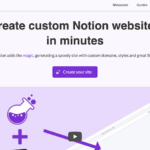Introduction
Are you looking to take your B2B SaaS company to the next level?
One of the best ways to do so is by learning from the successes of others.
In this article, we curated a list of the seven best B2B SaaS growth stories to help inspire your next strategy.
Whether it’s through partnerships, pricing and packaging, or product-led growth, these companies have all achieved explosive growth in their own unique ways.
By studying their approaches, you can gain valuable insights and ideas for how to accelerate your own company’s growth. So, without further ado, let’s dive into these inspiring SaaS growth stories.
Seven Growth Strategies
Everyone loves a good “come up” story, from Rocky to Rudy, and now to add Loom to the list. In Loom’s early days, the co-founders had maxed out their credit cards and were two weeks away from closing their doors. Fast forward to today, Loom is now valued at around $1.5 billion and has over 14 million users and 200,000 businesses on its platform. Here’s how they did it.
To onramp into the fast lane, Loom launched with a Product-led Growth (PLG) model and attracted users through a simple-to-use free chrome extension. The product’s quick time-to-value hooked users immediately, but it was the company’s execution to convert feedback into features that turned them into evangelists. Then four years into the company’s PLG model, Loom pivoted its GTM strategy to target enterprise accounts and increase its ACV.
Article by: Jessica Tee Orika at Foundation
Offering free products with a marketing intent in mind is at the heart of Similarweb’s growth strategy. The company uses ungated free tools as both a branding and SEO play to drive new top-of-funnel activity. In addition, the company's goal is to understand who the users are and what they’re looking to solve. This helps Similarweb to better route prospects to specific offerings.
Similarweb personalizes the onboarding journey and automatically opts users into a seven-day free trial to drive customer conversions. Once a user signs up, they are prompted with specific product features based on the information they provide. They are also hooked on advanced capabilities that are removed if they don’t convert after the trial period.
Article by: Kyle Poyar at Openview Partners
Doing more with less is a common theme in today’s economic environment. As a result, efficiency is top of mind for founders. Not only for their operations but also thinking of ways to use it in their messaging. To better understand how B2B SaaS founders can do this, I spoke with Prem Kumar, the CEO and co-founder of Humanly.io.
Here are the key takeaways from the latest SaaS Weekly Growth Story. 1) Frame your product messaging through the lens of Maslow’s Hierarchy of Needs. 2) Use your product’s data and analytics to establish your company as a thought leader in your industry. 3) Build a partnership channel to help scale pipeline generation and improve your product’s stickiness.
Article by: Ian Ito at SaaS Weekly
Don't Miss Another SaaS Growth Strategy
There are many differences between vertical and horizontal-SaaS companies. The most notable differences are: vertical SaaS companies have smaller TAMs, higher knowledge barriers, and fewer keywords to rank on. As a result, the standard go-to marking playbook needs to be modified.
For SimpleLegal, a management system for in-house legal teams, that meant taking a systematic approach to drive traffic to its site through content refreshing. Instead of continuously creating new articles to publish, SimpleLegal focused on updating existing content and re-promoting it throughout its channels. By refreshing content with new data and secondary keywords, SimpleLegal ensured it always had content to rank on and promote.
Article by: Ryan Law at animalz
Supermetrics, a marketing analytics platform, reached €1 million in ARR with no sales team or outside funding within four years of launching. The company leveraged marketplaces to accelerate the organic adoption of its products. Supermetrics started with an add-on for Google Sheets, then expanded into other ecosystems like AWS and HubSpot to tap into their vast user base.
In addition, the company used a 14-day free trial coupled with an accessible price point (to avoid approval roadblocks) to turn users into customers and then into raving fans. As the company scaled in size, Supermetrics transitioned from pure product-led to sales-assisted to acquire larger customers.
Article by: Kyle Poyar at Openview Partners
From an apartment-based startup to a $150 billion+ company, for over 20 years, Salesforce has been “eating the world.” At the center of the company's success is its strategy of building authority and trust through customer-centric content. Salesforce excels at using customer success stories, testimonials, and outcome metrics to convert prospects into paying users.
The goal is to showcase how customers can succeed with the platform and establish the company as an industry leader. Alongside success stories, Salesforce leverages dedicated landing pages for specific industries and keyword glossaries to tailor the messaging and dominate search.
Article by: Jessica Tee Orika Foundation
Despite competing in an oversaturated market, ClickUp, a cloud-based project management platform, reached six million users within five years. The company differentiated its brand and stood out from competitors by following a market shift to the “consumerization of SaaS.” This article walks you through the six core tactics that ClickUp used to achieve such rapid growth (my favorites are: “use community as a moat” and “uplevel your social strategy”).
Article by: Amelia Ibarra at SaaStr
Looking for more SaaS growth stories?
Stay up-to-date with the latest growth stories and curated SaaS content by subscribing to SaaS Weekly. Every Friday, we send you the best articles and case studies to inform your next growth strategy.







